Recent viewing, May-June 2016, part one
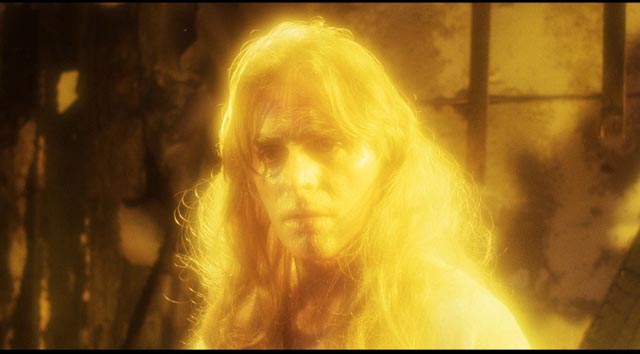
Writing here just once (or occasionally twice) a week, it’s just not possible to keep up with everything I’ve been watching. (Which probably means I’m spending way too much time sitting in front of the TV when I should be doing something more productive, but long-held habits are hard to break.) So here, once again, a few brief notes about recent viewing. Needless to say, many of these films deserve more in-depth comments than I’m giving them here.
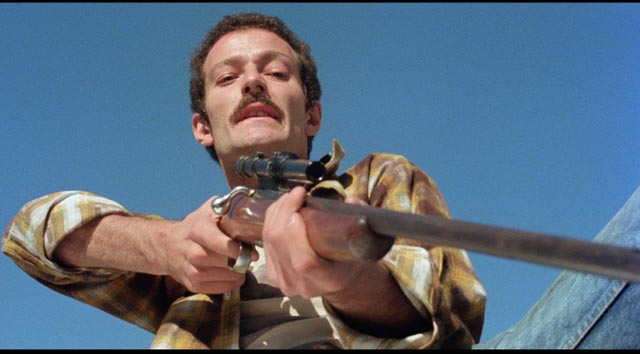
Larry Cohen two-fer
Larry Cohen has always reminded me of a more genre-centric Sam Fuller. His work is often brash, a bit coarse, and driven more by a sense of urgency than a desire for artistic finesse. While Fuller focused mainly on westerns, war films and noirish thrillers, Cohen has often aimed at horror and science fiction. After more than a decade of prolific television writing (including creating the iconic ‘60s emblem of paranoia The Invaders [1967-68]), Cohen branched out into directing in the early ‘70s with some key blaxploitation movies inflected with cogent social and political commentary. But he really hit his commercial stride with his fourth feature, It’s Alive (1974), one of the great monster movies of its era (in which, naturally, we turn out to be the real monsters).
It was his follow-up to that hit which turned out in many ways to be Cohen’s best and most ambitious film. God Told Me To (1976), like a number of his other movies, blends multiple genre elements into something distinctly original, and then renders them in a kind of energetic documentary-like style to give the fantasy a convincingly real edge. Here, Peter Nicholas (Tony Lo Bianco), a New York City cop, finds himself investigating a series of seemingly random acts of violence committed by otherwise ordinary people who all calmly inform him that “God told me to” do it.
The investigation not only leads to the discovery of an alien imbued with seemingly supernatural powers which make him seem like a god, but also leads Nicholas into his own past and a discovery which totally upends his sense of the world and his own identity. Here we get a police procedural, mixed with science fiction and horror, all leading to a bold dissection of the roots of religious belief. God Told Me To is gritty, fast-paced, and features a very good cast which includes, in addition to Lo Bianco, Sandy Dennis, Sylvia Sidney and Richard Lynch.
Blue Underground’s Blu-ray offers a new 4K transfer which makes the film look the best it possibly can, and ports over all the special features from an older special edition DVD, including a relaxed and informative commentary by Cohen which says a lot about making “big” films on very small budgets.
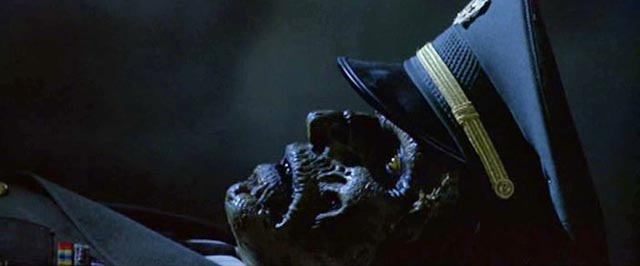
Also from Blue Underground, I just watched the Cohen-scripted Uncle Sam (1996), directed by exploitation specialist William Lustig. This is one of many scripts written by Cohen since he all but gave up directing in the mid-’90s, and it displays many of his strengths, including a degree of substance not often found in splatter movies.
Sam (David Fralick) is a soldier killed by “friendly fire” in the first Gulf War. When his body is found in the desert years later and returned home, his fury at what he sees as unpatriotic attitudes in the population reanimates him and he begins to kill those who don’t stand for what he stands for. The problem is that what he stands for is a blind adherence to militarism and a love of killing.
Set against him as he rampages through town over the Fourth of July weekend is his old mentor, Sgt. Jed Crowley (Isaac Hayes), and Sam’s young nephew Jody (Christopher Ogden), who idolized his uncle and shares his passion for the idea of war until he gets a close look at what’s really involved. Cohen and Lustig are going after the complacency of homefront civilians who are given to thanking those who serve in uniform while not wanting to have anything to do with the nasty side of military commitment themselves; but they’re also going after the destructive absurdity of a national commitment to invading other countries to “fix” them through massive destructive violence.
This is a fairly rough-and-ready movie, mixing social comment with violence both nasty and slapstick, but it has garnered very little respect among fans. As far as I can tell from some cursory reading (and remarks offered by Cohen and Lustig in their commentary track), the biggest problem is that the movie spends too much time on its characters and their milieu and is too restrained in its gore. Fans don’t generally come to something like this for a critique of contemporary society; they want to see the splatter. Personally, for that very reason, I liked it more than I expected to.
The Blu-ray has a pair of commentaries, one with Lustig, Cohen and producer George G. Braunstein, which again covers a lot of the details of producing on a low budget; the second with Lustig and Isaac Hayes, which is chatty and loaded with anecdotes. There’s also a featurette on the film’s major fire stunts, a few deleted scenes and a gag reel.
*
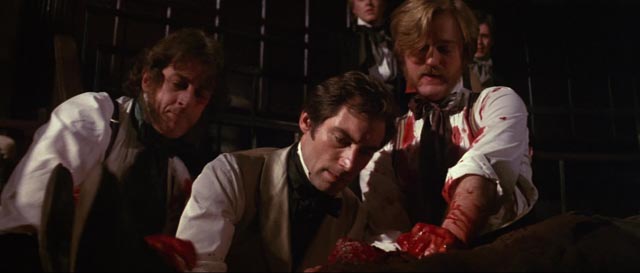
Two from Shout! Factory
Freddie Francis was one of the truly great cinematographers, winning two Oscars, four BAFTAs, and numerous other awards for his work. He shot such key British films as Room at the Top, Sons and Lovers, Saturday Night and Sunday Morning and The Innocents, and created indelible yet widely varied imagery for David Lynch on The Elephant Man, Dune and The Straight Story. Yet despite this association with prestigious projects, when Francis turned to directing in the early ‘60s, he specialized almost exclusively in the less reputable field of horror, with many of his movies financed by Hammer.
As a director, he was not quite the craftsman he was as a cinematographer. Much of his work is rather ordinary; he made one each of Hammer’s lesser Dracula and Frankenstein movies, although his psycho thrillers for the studio aren’t bad. He made no less than three of the Amicus horror anthologies, plus another for a different company. He did occasionally branch out into something more adventurous, with varying results, like Mumsy, Nanny, Sonny & Girly (aka Girly, 1970), Joan Crawford’s absurd final feature Trog (also 1970), and perhaps his oddest work, the musical Son of Dracula (1974), but his major bid to be considered a serious director came indirectly from his association with David Lynch, when Jonathan Sanger and Mel Brooks, producers of The Elephant Man, offered him the chance to turn Dylan Thomas’ sole original screenplay (unproduced, but published in 1953) into a movie.
The Doctor and the Devils (1953) is based on the true story of body-snatchers and murderers Burke and Hare and the Edinburgh doctor, Robert Knox, who bought their victims for his anatomy classes at the university in the late 1820s. Thomas’ script was a poetic attempt to examine the moral implications of using bad methods to bring about good ends. The reworking of his script by Ronald Harwood turned the story into a more straightforward retelling of the familiar tale, complete with romantic subplot. With a good cast (Timothy Dalton, Jonathan Pryce, Stephen Rea, Twiggy, T.P. McKenna, Patrick Stewart, Sian Phillips and others), atmospheric production design (by Robert W. Laing) and photography (by Gerry Turpin and Norman Warwick), this is definitely a handsome film. But it doesn’t really add much to what we’ve seen before, particularly in John Gilling’s more energetic rendition in The Flesh and the Fiends (1960).
Still, there are some very good scenes and it certainly looks good on Shout! Factory’s Blu-ray, which also features a commentary by Steve Haberman, which fills in a lot of the historical background, and an interview with Mel Brooks and Jonathan Sanger.
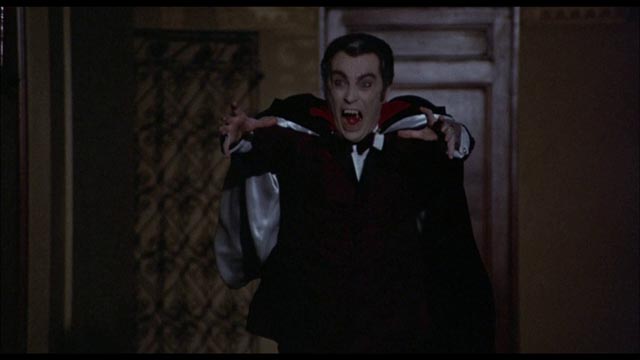
More entertaining if somewhat less upscale is Bob Kelljan’s The Return of Count Yorga (1971), that rarity, a quickie follow-up to an unexpected hit which ended up being better than its predecessor in every way. Perhaps this had something to do with the fact that Count Yorga, Vampire (1970) had originally been conceived as a porn film and had morphed in the process of production into straight horror, while the sequel was a more conscious attempt at a modern vampire tale. Made in Los Angeles just after the violent end of the ‘60s, the shadow of the Manson murders and a soured counter-culture looms over the film. The violence remains shocking even today, while the attempt by the jaded Count (Robert Quarry reprising the role) to enter into a romance with a mortal woman (Mariette Hartley) adds a poignant element. The mild attempts at comic relief provided by a pair of cops (Rudy De Luca and Craig T. Nelson) investigating events around the vampire’s mansion are occasionally strained, but Kelljan’s film is one of the best attempts from that era to bring the traditional blood-sucker into the modern world.
This low budget effort looks quite good on Shout! Factory’s Blu-ray; the disk features another Haberman commentary, with him being joined this time by actor De Luca.
*
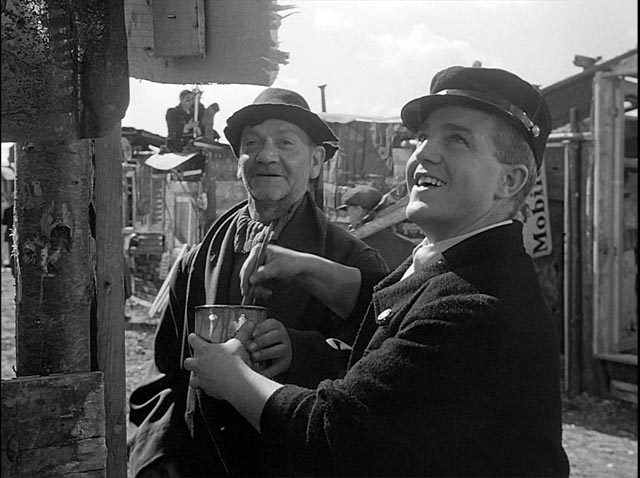
A De Sica duo
Towards the end of the classic neorealist period, Vittorio De Sica made a pair of features which both stretched and reiterated the form. In the award-winning Miracolo a Milano (Miracle In Milan, 1951), De Sica turned to fantasy elements to expand on his close observation of post-war social reality. But unlike Roberto Rossellini in The Machine That Kills Bad People (1948/52), De Sica isn’t aiming here for satire. This is a fable, based on a book scriptwriter Cesare Zavattini had written for children. Although the essence of the film is a depiction of displacement and the victimization of the working poor by a capitalist system, its tone is light and often playful.
Toto (eventually played by Francesco Golisano) is discovered as a baby by an old woman in her cabbage patch and she raises the child until she falls ill and dies. After her funeral, he is placed in an orphanage from which he eventually emerges as a young man whose nature is cheerful and entirely innocent. But there seems to be little place for the likes of him in a world busily rushing to make money. Before long, he finds himself among the inhabitants of a shanty town built illegally on the outskirts of the city. Here, in contrast to the sense of isolation in which De Sica’s characters so often find themselves, Toto becomes part of a community, his innocence serving to bring harmony where hardship has previously been producing friction.
When oil is discovered under the settlement, wealthy businessmen move in to take over, using police and later the army to forcibly remove the squatters. But the spirit of Toto’s “mother”, the old woman who had raised him, descends from the clouds and hands him a dove she has taken without authorization from whatever authorities exist in the afterlife. With this dove, Toto is able to grant wishes and produce miracles. The assault of the army is defeated as the squatters literally blow away the pall of smoke produced by gas bombs, and the commanders lose their authority as their attempts to give orders emerge as operatic arias.
But then a pair of “angels” arrive and take the dove back; with Toto losing his power, the community is broken up and everyone carried away in wagons. His mother reappears one final time, and with the dove once again in his hands, Toto frees everyone and they all fly off in search of a better place. While this all sounds very fey, De Sica and Zavattini ground the fantasy in yet another well-observed depiction of life for the working poor. The villains are portrayed as almost cartoonish buffoons in their suits and top hats (like an illustration from the cover of a Monopoly box), but the squatters possess an air of reality, their sense of community grounded in the hard details of life on the fringes of an affluent but insensitive society.
Following Miracolo a Milano, De Sica made his greatest neorealist film, Umberto D. (1952), and the troubled Terminal Station/Indiscretion of an American Wife (1953), which was co-produced by David O. Selznick as yet another vehicle for his then-wife Jennifer Jones. (As with Michael Powell’s Selznick-co-produced Gone to Earth [1950], the film ended up in two versions, with Selznick insisting on making his own cut.) Then, after contributing to two anthology films, De Sica and Zavattini collaborated on what would be their final neorealist feature, Il Tetto (The Roof, 1956).
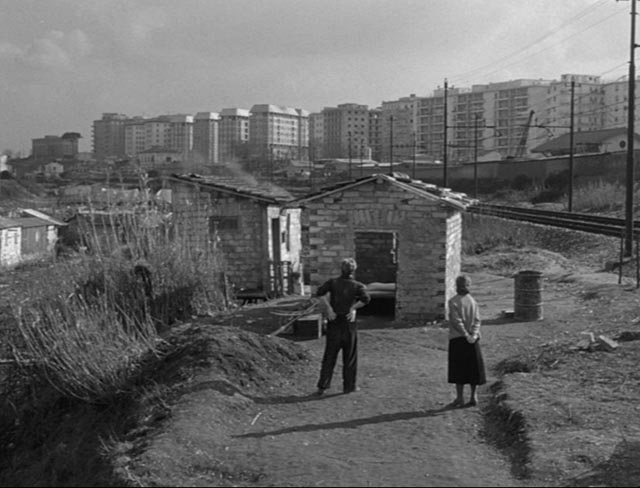
While all the neorealist elements are there, Il Tetto has something previously absent: a genuine sense of hope. It begins with the wedding of Natale Pilon, an apprentice bricklayer (Giorgio Listuzzi), and Luisa (Gabriella Pallotta), the daughter of a fisherman who disowns her because she has married against his wishes. Much of the film deals with the difficulties involved in establishing this marriage in severe poverty. Natale and Luisa’s love for each other is seriously tested as they squeeze into the home of his family. The hostility of Natale’s brother-in-law Cesare (Gastone Renzelli) leads to an argument and Natale packs all their possessions on a cart and leaves. The problem is where to go.
A room they had previously looked at turns out to have been condemned in the meantime and the pair have to split up while they try to find a new home. Luisa discovers a squatter settlement like the one in Miracolo a Milano and learns that under the law, if you build a shelter with a roof and door before the police catch you at it, then you have the right to stay; but if they find you before the roof is on, you’re fined and your shelter is torn down. Natale makes plans to build in the settlement, but on the night when he and the co-workers he has enlisted to help turn up with the building materials, they are betrayed by a local man who resented Natale not paying him for the privilege of settling there. The police arrive and everyone is forced to leave.
As they leave the settlement, a new site is found in the Ditch of St. Agnes, tucked between a busy railway line and a river. Natale and his friends race to complete the small, one-room shelter before dawn, but things don’t go well. Luisa, by now pregnant, hurries away and goes to ask Cesare for help. The bonds of family overcoming anger, he joins the small crew and the “house” is almost completed on time. But the roof isn’t quite finished when a pair of policemen come by. Yet even these representatives of authority can see the sincerity of this young couple and the severity of their need and, while issuing a ticket and taking a small fine, they walk away to leave Natale and Luisa in their new home.
Once again, the details of poverty are finely observed, all the petty humiliations and emotional stresses and the callousness of a society which has little empathy for the poor. But Natale and Luisa find a community which is willing to help them and their most immediate needs are eventually met, offering the possibility that they might actually be able to build a life and a family together.
By 1956, neorealism seemed spent and, despite the film winning an award at Cannes, many critics dismissed it as a pale echo of former achievements. But now, at six decades’ distance, Il Tetto looks every bit as accomplished as De Sica’s more revered works and definitely deserves to be re-evaluated as perhaps the last great neorealist film.
Arrow Video’s three-disk edition presents both films in excellent restorations, the black-and-white photography rich in contrast and detail. Miracolo a Milano is on both Blu-ray and DVD, while Il Tetto is on DVD only. The set makes an excellent companion for the BFI Rossellini disk I wrote about a few weeks ago.
Comments